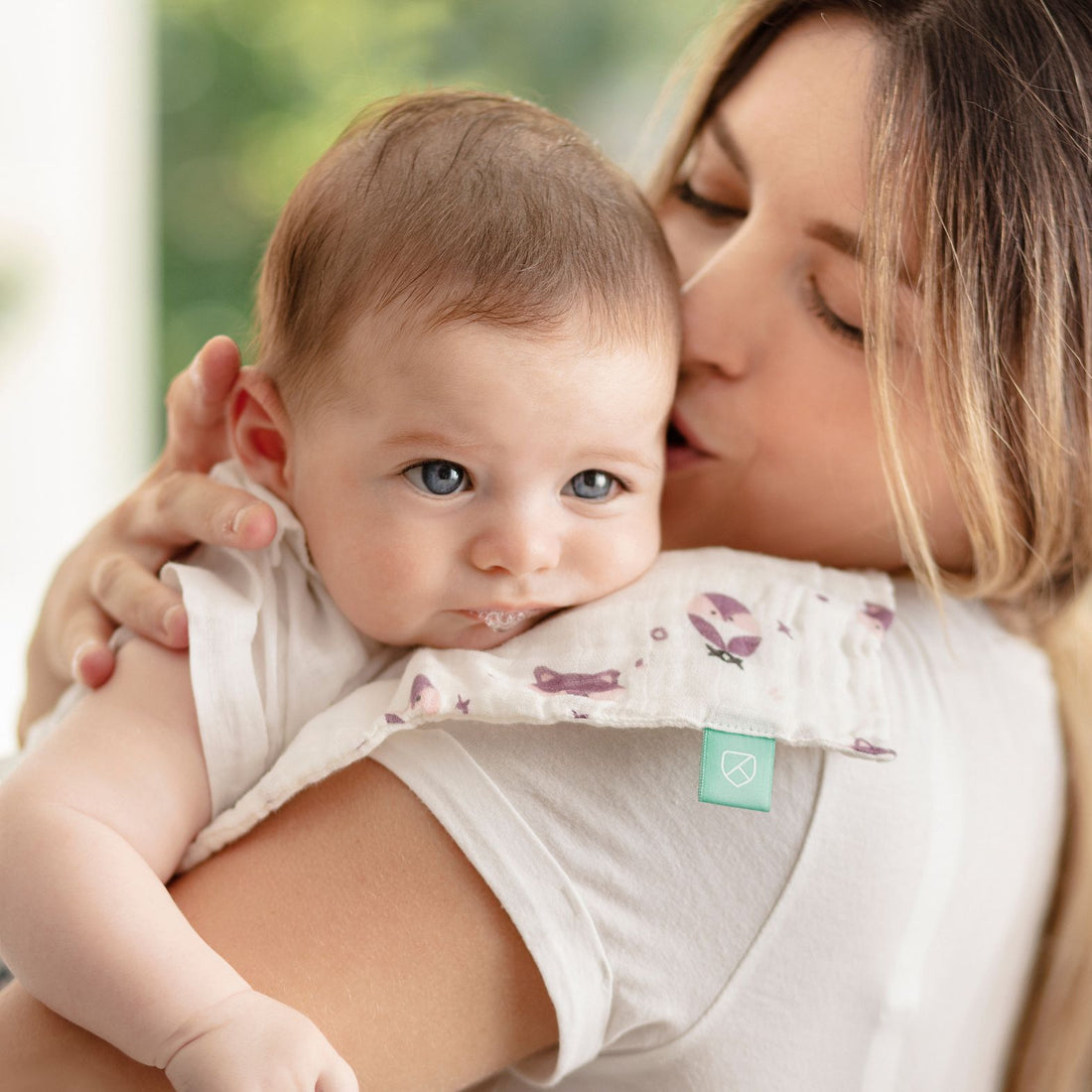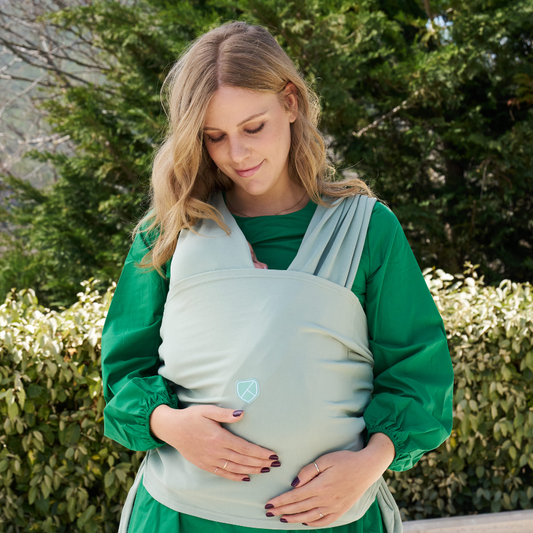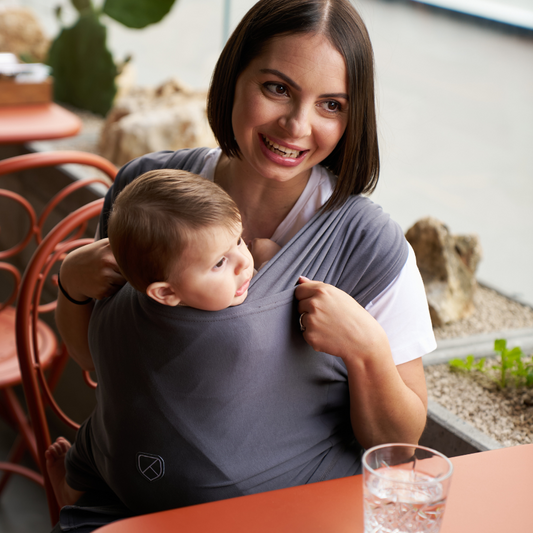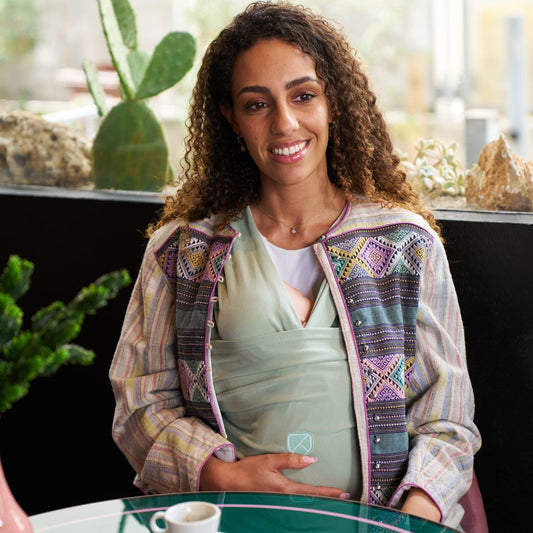Babywearing offers many different benefits, but today we’re focusing on one particular very important benefit, which not only aids a baby’s well-being, but also helps ease parents’ concerns: babywearing offers benefits to infants who are prone to colic and, especially, to reflux.
When inside a baby sling, wrap or carrier, a baby is in an upright position, which offers relief and aids digestion. Yet, that’s not all... Read on to find out more.
Newborn and reflux: Let's start at the very beginning: what exactly is reflux?
Reflux, whether just occasional or not, is very common, especially in infants up to 6 months old. Acid reflux in newborns tends to subside and eventually disappear by around 12 months old.
The cause is purely physiological: a young infant’s digestive system is still developing. More specifically, the cardia valve, which connects the stomach and oesophagus, does not close properly, causing ingested milk to flow back up.
It’s also true that newborns spend most of their time lying flat on their backs, which is another reason why milk tends to flow back up into the oesophagus.
Reflux in infants, how to recognise it
Not all babies who suffer from reflux bring up their milk (which is commonly known as: regurgitation), some babies may experience silent reflux newborns (as mentioned in reflux in newborns NHS ).
How to tell, then, if your baby is suffering from digestive problems?
Newborn reflux symptoms:
- irritability
- hiccups
- colic
- intestinal irregularity
- bringing up milk or being sick during or shortly after feeding
- frequent burping
- difficulty sleeping
In general, infants who suffer from reflux are unsettled, cry more frequently, arch their back and head during or shortly after a feed. They don’t seem to like lying down on flat surfaces such as their carrycot or crib, preferring to be held or in an more upright position which tends to ease their reflux.
How to ease reflux in newborn babies?
The first thing to do is to hold your newborn in an upright position after feeding to aid digestion.
You can also place your baby on a surface with an incline angle of about 30 degrees (you can simply place a towel underneath the mattress, for example). Remember that babies should always lie on their backs, at least until they learn to turn over themselves!
An even better solution is to use a baby sling carrier, which respects a baby's physiological positioning, responds to their need for physical contact and keeps them upright.
Babywearing is a natural newborn reflux treatment method
Babywearing slings, wraps and carriers are an effective remedy on how to help baby with reflux for several reasons.
Firstly, it keeps a baby in an upright (and physiological) position, aiding proper digestion and preventing ingested milk from flowing back up their oesophagus.
Babywearing is a great alternative to the supine position for how to help colic baby or help a newborn with reflux, without having to hold your baby in your arms for long.
Parents with babies who suffer from reflux find themselves spending most of their time carrying their infant, and, therefore, are unable to engage in other daily activities. Babywearing lets you hold your baby, yet keeps your hands free at the same time.
Heart-to-heart close contact with mum or dad also calms and soothes your baby, helping to ease emotional discomfort that reflux can bring.
Another benefit of babywearing when your baby suffers from reflux is the possibility it offers of breastfeeding in a sling wrap. Using a baby carrier for breastfeeding helps your infant maintain an upright position during a feed which can favour digestion.
How to breastfeed with Koala sling carriers? Remove the support band, loosen the rings a little, and lower your baby so they can comfortably latch on to your breast. Once you have fed your baby with your breastfeeding sling, reposition your wrap sling correctly.









